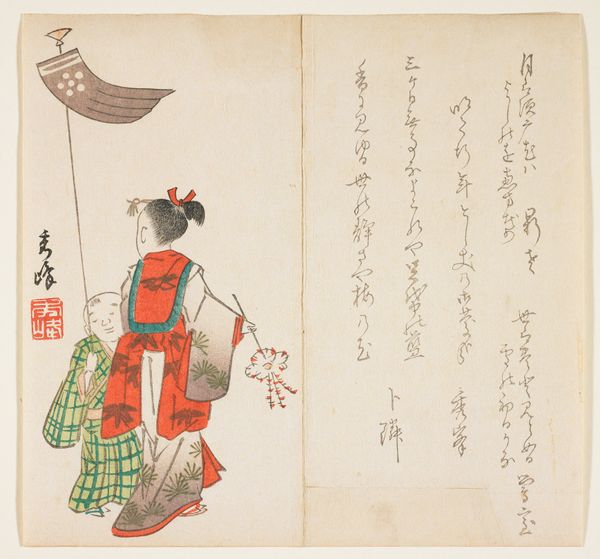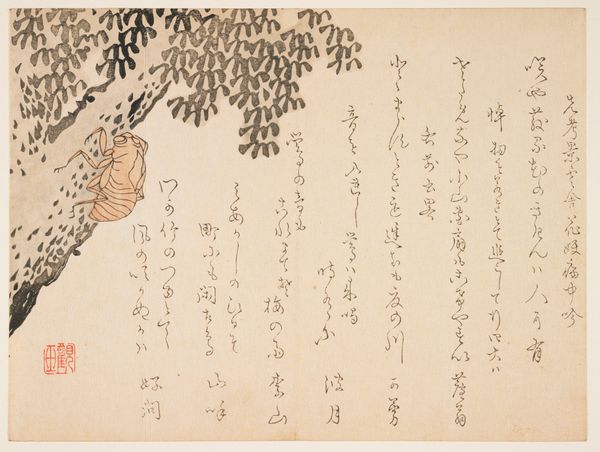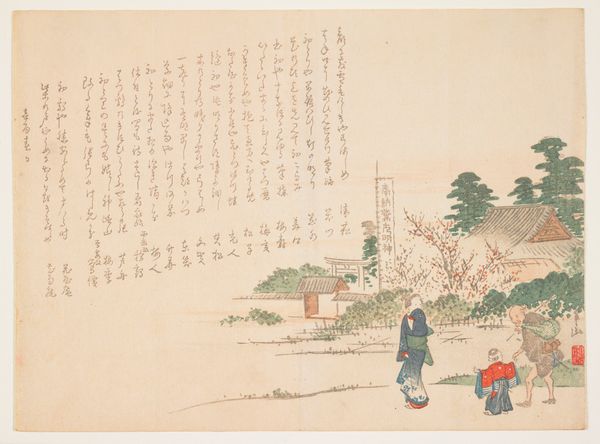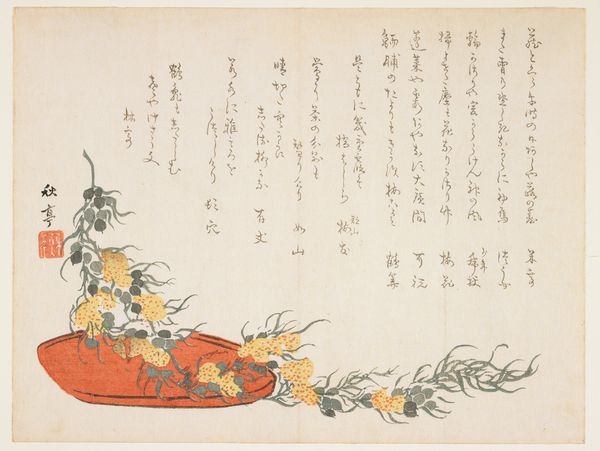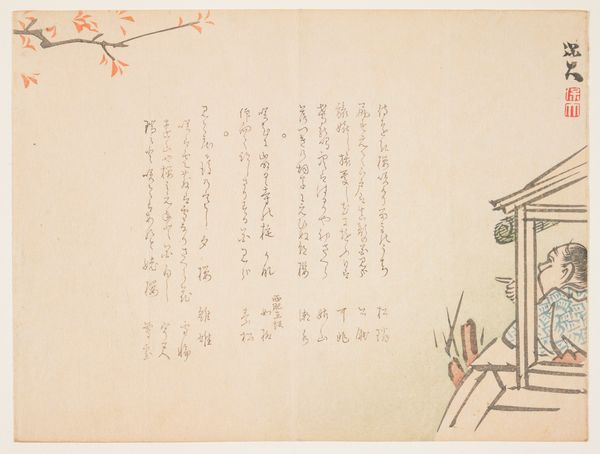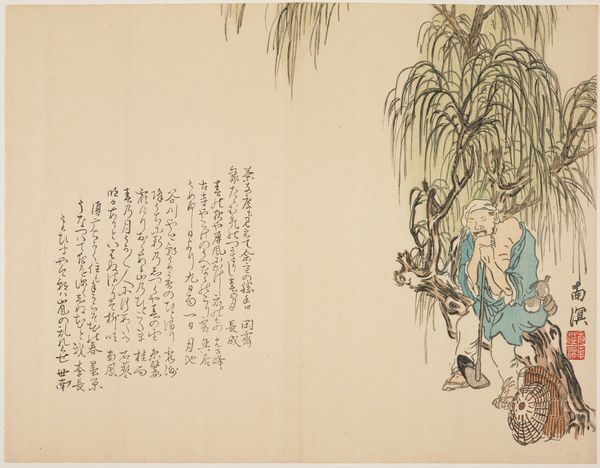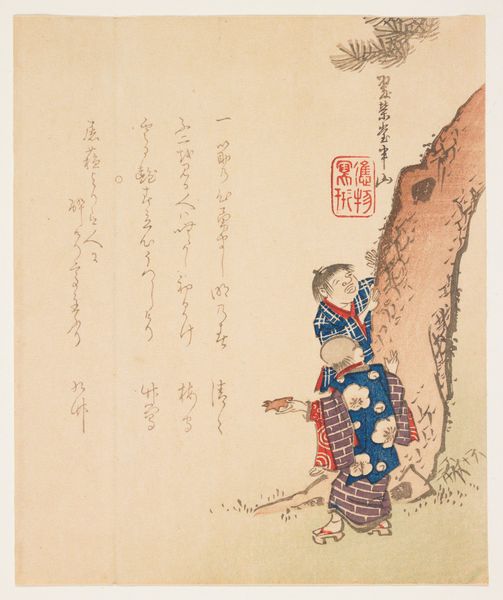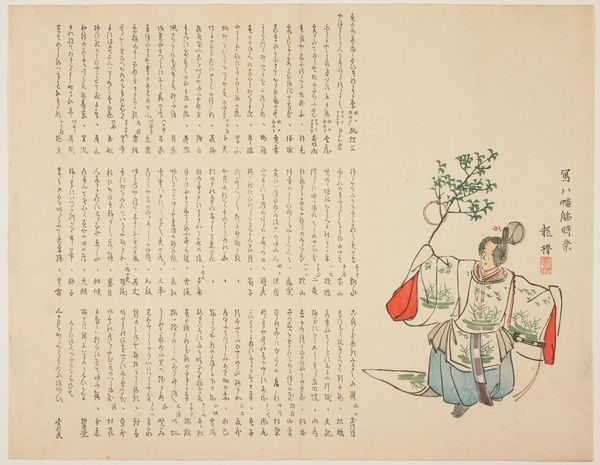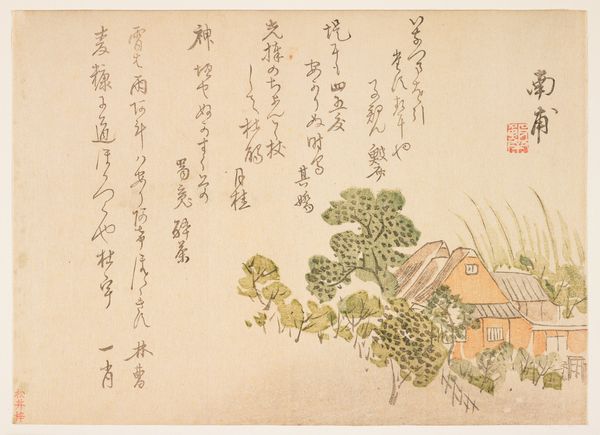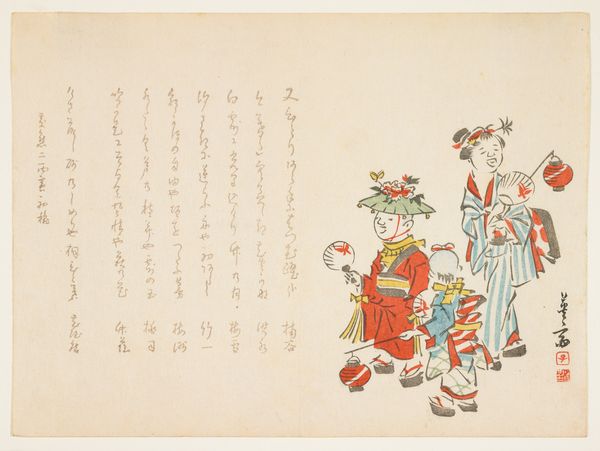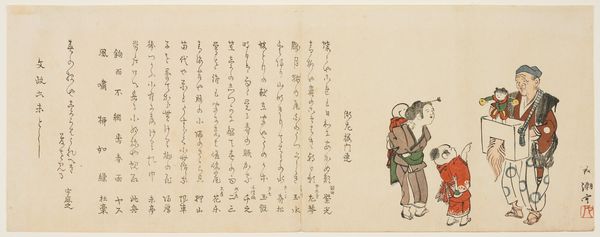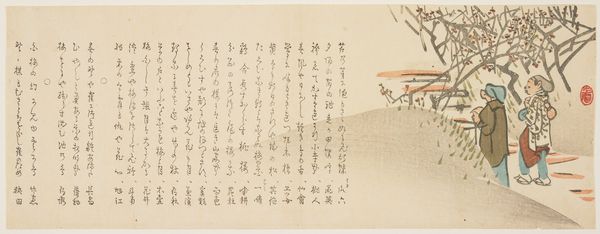
print, paper, ink
# print
#
landscape
#
ukiyo-e
#
paper
#
ink
#
genre-painting
#
watercolor
Dimensions: 7 1/8 x 9 1/16 in. (18.1 x 23 cm) (image, sheet)
Copyright: Public Domain
Editor: This is “Tea Pickers,” a print by Murata Yoshikoto, likely made between 1830 and 1844. It’s ink and watercolor on paper and is now at the Minneapolis Institute of Art. It feels so calm, a small scene of daily life, but what jumps out at me is the contrast between the figures on the left and all that text on the right side of the composition. What do you see in this piece? Curator: The Ukiyo-e tradition carries such emotional weight, doesn’t it? We are drawn in by what appears to be, on the surface, an idyllic scene of tea pickers, seemingly undisturbed by the larger world. However, the poem suggests a deeper consideration of the temporality of the scene, or the tea pickers as representing idealized versions of ordinary people. Editor: So the imagery and the text create another layer to the reading? Curator: Precisely. The symbolism inherent in something like tea – consider its use in ceremonies or even just daily life as something restorative – positions this seemingly simple activity as culturally important and deeply interwoven into the social fabric. The text then acts as a type of mirror, causing one to reflect. The thatched umbrella? Note its delicate presence—perhaps that’s an extension of nature's benevolence toward humankind. Editor: That’s really fascinating, the way you’re drawing connections between the practical aspects of the scene and the potential for symbolic readings! Curator: The poem emphasizes how simple things and practices connect people to something grander, the landscape and each other. We remember ourselves through these small vignettes. What is "home," but a repository of sensory details which root us in lived experience? Editor: It really changes how I see the whole composition. Thank you for your time. Curator: And thank you. Looking closer reveals so much, doesn’t it?
Comments
minneapolisinstituteofart about 2 years ago
⋮
The Japanese begin to harvest tea in early summer. Shincha, the first tea of the season, is made by using only the fresh yaoung leaves. It is highly prized for its delicate, fresh flavor and bright green color. Harvesters must carefully pluck the tender buds without damaging them. Consequently, this work is traditionally done by women whose gentle touch and small hands are more adept at this painstaking process. Here, Kagen depicts two tea pickers to accompany poems about summer. Dressed appropriately for the task, they wear indigo-dyed or simple striped kimonos and arm covers to protect their forearms from scratches. The bright red cords that bind their wide sleeves and the sash worn by one of the women contrasts beautifully with their plain outfits.
Join the conversation
Join millions of artists and users on Artera today and experience the ultimate creative platform.

